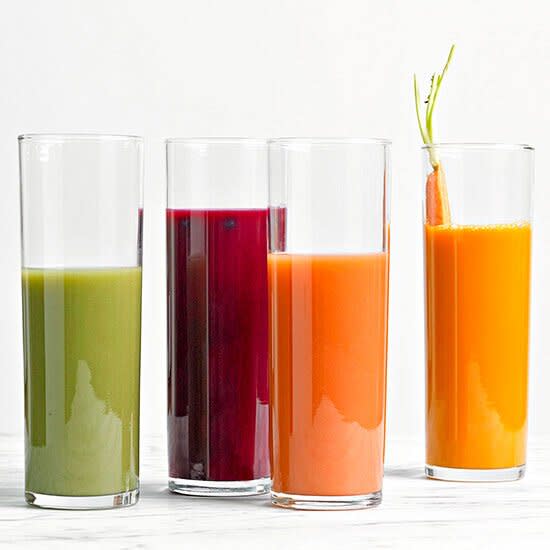New Study Finds Worrying Levels of Metals in Fruit Juices
Fruit juice may not have the health halo it once had—sometime in the last 15 years, it seems like we all simultaneously looked at the nutrition facts and realized how much sugar is in there—but it’s still a fundamental drink for both kids and adults. Fruit juice can have plenty of health benefits (especially 100 percent juices), despite that sugar, especially vitamins and minerals such as vitamin C, folate, and potassium. But, according to a new Consumer Reports study, there might also be something you don’t want to drink: heavy metals like arsenic, cadmium, and lead.

The Consumer Reports study tested 45 of the most popular fruit juices across the country, including brands like Mott’s, Ocean Spray, Juicy Juice, Welch’s, and Capri Sun. The selection includes cheap brands and extremely pricey brands, nationwide brands and house brands. If you bought fruit juice in the past year, you’ve almost certainly bought one of these brands.
The FDA has strict limits on heavy metal concentration in water, but not in fruit juice; a proposal for a limit for apple juice remains unpassed. Consumer Reports’s criteria is stricter than anything proposed by the FDA: 3 ppb (parts per billion) of arsenic, 1 ppb for lead, and 1 ppb for cadmium. (None of the tested juices tested at a concerning level for mercury, phew.) Finding any of these metals at all is not something you want, and, according to consumer reports, drinking more than four ounces per day of some of these juices could pose a risk to both children and adults. Most standard-sized kid’s juice boxes clock in at 6.75 ounces, which means, in some cases, a single daily juice box could be cause for concern.
When results came in, nearly half of the juices tested had a higher level than Consumer Reports wanted for lead. Forty-two percent of the juices tested too high for arsenic. Trader Joe’s fresh-pressed apple juice tested at a whopping 15.4 ppb for arsenic, even higher than the FDA’s proposed-but-tabled suggestion of 10 ppb. Juices with grape in them tended to have higher levels of heavy metals than fruits like apple or pear. It’s unclear exactly why grapes might have a higher concentration of heavy metals than other fruits (one study suggests that washing can help reduce arsenic levels in grapes), but it’s something to keep in mind.
How Do Metals Get into Your Juice?
Heavy metals don’t have a strict definition, in music or in chemistry, but include a wide variety of materials, from dangerous (arsenic, copper) to harmless and even essential for life (iron, zinc). They’re found throughout the environment, especially in soil and water, sometimes naturally and sometimes through added chemicals like pesticides and from car and truck emissions. They generally make their way into the food system either through water or through plants, which absorb the scary metals along with the nutrients they need to survive and grow.
Some plants tend to extract and hold more heavy metals in their edible parts than others; rice, for example, is notorious for sucking up arsenic. Those levels also vary based on environment, which makes sense: if there’s more arsenic in the soil in one part of the country, an arsenic-thirsty plant will end up with higher levels than it might if grown somewhere else. Well, maybe not arsenic-thirsty. Nobody, not even a plant, is particularly thirsty for arsenic.
Heavy metals can be toxic, but they work in particular ways. Most importantly, they build up in your body, meaning that even small amounts can be dangerous, simply adding to your body’s total reservoir of metal. The effects of a slow, chronic build-up range from headaches and tiredness to vomiting, cramps, and, theoretically, death, though fatalities from heavy metals tend to come from acute poisoning rather than a slow build-up.
That’s why a daily juice box could pose some real threats. It’s not that that individual box, with its little attached straw and friendly artwork of fruits, is dangerous in itself. But a juice box or two per day might not keep any doctors away.
